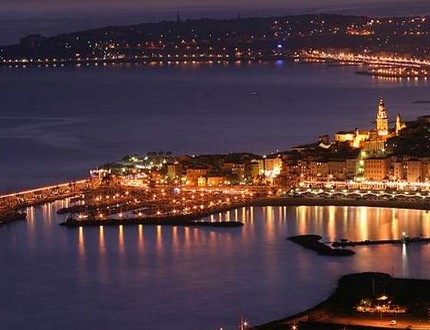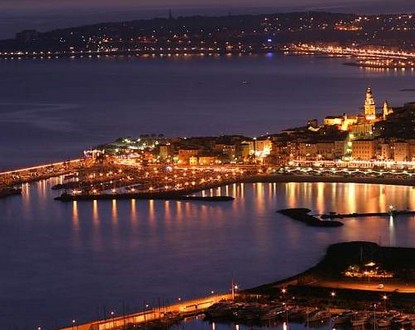The City of Menton has just completed an innovative public lighting project on the Cours Georges V. The old “sphere” lamp posts have been replaced with LED lampposts regulated by motion sensors. A unique process in France!
 This project meets three objectives outlined in the “Grenelle 1 and 2” environmental laws.
This project meets three objectives outlined in the “Grenelle 1 and 2” environmental laws.
Reduce light pollution caused by fixtures that also illuminate the sky:
The old “sphere” lamp posts caused a significant loss of light, creating disturbances for neighbors, especially for nearby apartments that were partially lit by the lamp posts.
This phenomenon of light pollution has very significant effects on animal, plant, and human populations, where multiple behavioral and physiological disruptions have been observed.
The new lamp posts focus their light output solely on the sidewalks and roadway, optimizing the ratio between energy consumption and light intensity by eliminating any loss.
Use the latest lighting technology to achieve optimal energy efficiency:
We have thus replaced 31 fixtures equipped with 125-watt fluorescent lamps with 12 fixtures equipped with 59-watt LEDs. This measure allows us to save over 80% of the consumed power with better light output, thus providing more efficient lighting.
Equip public lighting systems with intelligent regulation systems that reduce light output based on user traffic:
The twelve installed LED fixtures incorporate a motion detection sensor.
Each fixture is equipped with 4 rows of LEDs; when the sensor does not detect pedestrian or vehicle presence on the sidewalks or roadway, only 2 rows of LEDs are powered to provide ambient lighting.
When the sensor detects the presence of a pedestrian or motorist within a 16-meter radius, all rows of LEDs light up to provide optimal lighting, which has been the subject of a precise lighting study.
Of the average 11 hours of lighting duration, we estimate that the system will operate at 50% for 6 hours, allowing for an additional 30% energy-saving thanks to this regulation system.
By combining all these technological innovations, we will reduce the operating costs of this installation by nearly 86%.
In terms of CO2, there is an 88% gain achieved by combining the reduced power consumption and the carbon footprint of the installed equipment, considering that the indicative lifespan of an LED lamp is 50,000 hours, while that of traditional incandescent lamps is 12,000 hours.
Public lighting accounts for 23% of the total energy bill and 38% of the electricity bill for municipalities. This represents an average annual cost of 40 to 70 Euros per light point.
In France, 9 million lamps are used to illuminate towns and countryside, representing 1,260 MW, equivalent to a nuclear reactor.
In the community, 5200 light points illuminate our streets and paths at an annual cost of nearly 300,000 Euros.
Other energy reduction systems have already been implemented in the community, such as intensity regulation cabinets installed in 2010, which allow a 30% saving on consumed power, as well as solar lampposts installed in the Ferdinand de Lesseps square in Garavan.
The aim is, of course, to significantly reduce the electricity bill that impacts the community’s operating budget, with the goal of achieving a long-term saving of 30%, or 100,000 Euros per year.
These measures will also comply with the “Grenelle” 1 and 2 environmental laws regarding CO2 emission reduction, as well as the climate plan initiatives led by the General Council to manage the public lighting power consumption, which significantly contributes to the energy consumption peak that we struggle to handle in our department and which resulted in load-shedding operations on the network in 2010.



